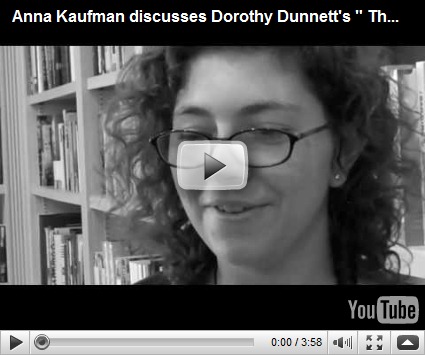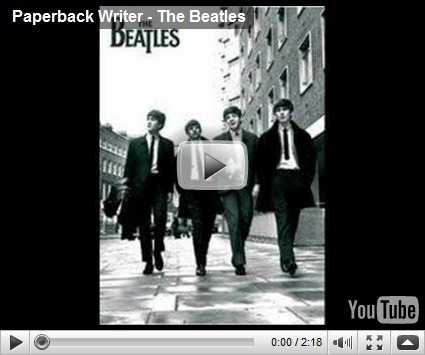I finished Simon Mawer’s Booker Prize nominated novel The Glass Room a few weeks ago and I’ve been debating whether I wanted to write about it. I had pretty much decided not to but then I read Danielle’s review over at A Work in Progress. That got me thinking about it again.
This is a novel about a house. Although the characters in the novel are fictional, the house is based on a real house: the Tugendhat House, designed by Mies van der Rohe, in Brno, the Czech Republic. Here it is:

When Mies van der Rohe left Europe in the 1930’s he settled in Chicago. Mies van der Rohe buildings, and buildings “in the style of” Mies van der Rohe, punctuate the skylines of cities here in the Midwest. I’ve always found them cold and, truthfully, ugly. So the idea of reading a novel set in a Mies van der Rohe designed building was not largely appealing to me. On the other hand, I was reading my way through the Booker Prize nominees and this was one of them. And it was, after all, a novel, which meant the house would only be a setting.
How wrong I was. The house was the main character of this novel.
I’ve tried to decide if my dislike of Mies van der Rohe architecture caused me to not be engaged in this novel or if it was simply difficult for me to identify with a house as a main character. In Sarah Waters’ The Little Stranger, the house was certainly a character. But the human characters who interacted with it were established at the beginning of the novel and didn’t change throughout the novel. It was the story of the interaction between specific characters and between them and the house.
This is the story of the house. The original owners, who designed and built it, appear to be the main characters for a while. Even after they are forced to abandon the house at the start of the war, we follow them to Switzerland. Mawer then interweaves their story with the story of what is happening to the house they left behind. But then they realize they must leave Europe and go to America (they are very wealthy so this isn’t as impossible as it was for others) and we lose them as characters. We do not see them past their train journey through occupied France. We do not see their trip to Cuba. We do not see them settle in New England. We do not meet them again until years later. In the meantime the story of the house goes on. But the people who occupy the house are not particularly likeable. And the house is never used as a home again. That just didn’t work for me because I didn’t really care about the house.
Where Mawer excelled however was in describing the loving design of the house and the hopes and dreams that were poured into it. The relationship between the couple, Leisel and Viktor, who commissioned the house and the architect who designed it is rendered very well. It is Viktor, a wealthy Czech industrialist, who is committed to the idea of building a modern home but it is his wife Leisel, the child of a traditional, wealthy Czech family who gets caught up in the idea. When Viktor waivers it is Leisel who insists that they will build their dream. It is Leisel who ends up working closely with the architect and their relationship is a true meeting of minds and is fully believable. As I read this portion I thought that Nancy Horan, the author of Loving Frank, would have written a better novel if she had been able to capture the same relationship between Mamah and Frank Lloyd Wright.
The other thing Mawer was successful with was giving me an idea of the hopefulness of modern architecture. I’ve never thought of modern architecture as hopeful. I’ve always thought it was somewhat depressing. All those big spaces to be filled, all that hard glass and those stone floors and walls, all those big windows that give you no privacy. Modern architecture seemed to me to be a metaphor for the hard, cold, impersonal 20th century.
But this house is a building full of hope. Czechoslovakia was, in the 1920’s, a new country. Cobbled together out of parts of the Austro-Hungarian Empire, it was a new country, full of hope. After the carnage of World War I, it is a time of peace and calm.
Space light, glass; some spare furniture; windows looking out on a garden; a sweep of shining floor, travertine, perhaps; white and ivory and the gleam of chrome. The elements moved, evolved, transformed, metamorphosed in the way that they do in dreams, changing shape and form and yet, to the dreamer, remaining what they always were: der Glasraum, der Glastraum, a single letter change metamorphosing one into the other, the Glass Space becoming the Glass Dream, a dream that went with the spirit of the brand new country in which they found themselves, a state in which being Czech or German or Jew would not matter, in which democracy would prevail and art and science would combine to bring happiness to all people.
And as Hitler rises in Germany, the people ignore the danger. And the house?
The Glass Room remained indifferent, of course. Plain, balanced, perfect; indifferent. Architecture should have no politics, Rainer von Abt said. A building just is. Below it, lapping up to the foot of the garden, were the rough tides of those political years, while the Landauer House stood beached on the shore above the tidemark like a relic of a more perfect golden age.
But the house is taken by the Reich and used in the performance of it’s pseudo-science. It’s purpose is converted and perverted. It never regains it’s original luster. It is never used as a home again. At best it will be a museum.
While I can’t really recommend this novel as a novel, I do think there were parts that were worth reading. Others, perhaps, would have less of a problem than I did with the house as main character. But I just couldn’t get past it.


